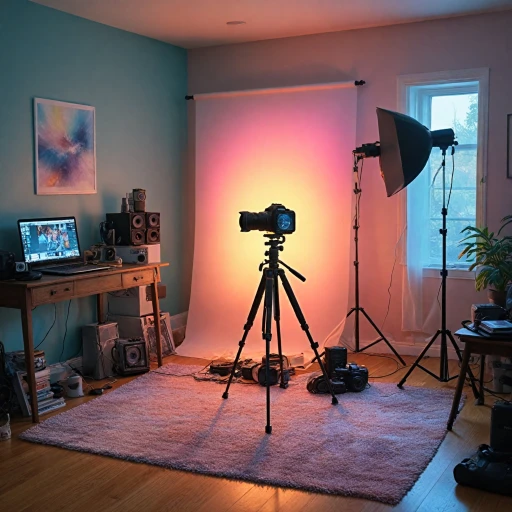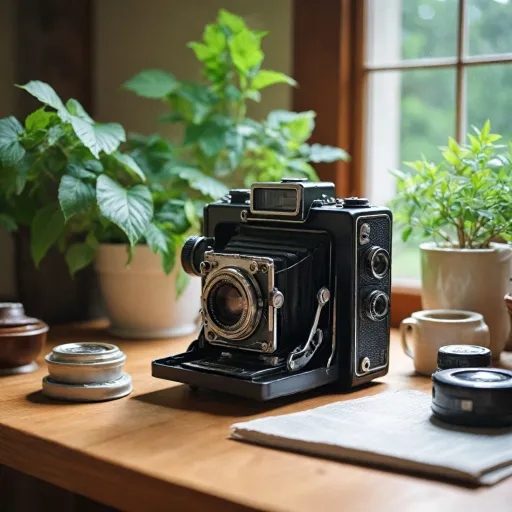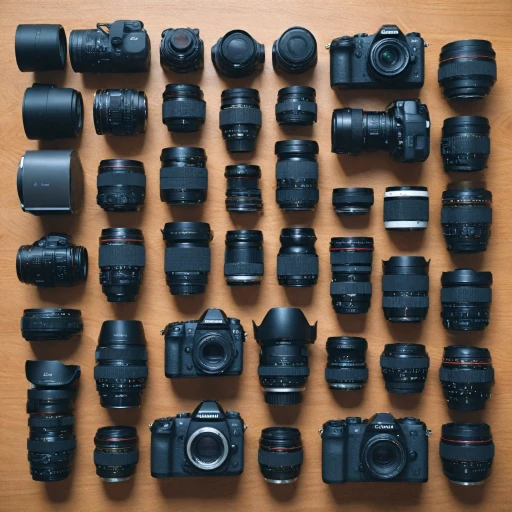
What Are Camera Pins?
Diving into the Technicalities: Functions and Roles
Digital photography involves a variety of intricate components, each fulfilling a unique function. Among these, camera pins stand out as vital connectors that facilitate various interactions within the camera body. These small, often overlooked parts are essential to the functionality of both high-end and consumer-level cameras. Their role extends beyond just being physical connectors; they facilitate essential connections that aid in the transfer of both audio and video signals, ensuring your camera operates smoothly. Camera pins come in different types and configurations, crafted to integrate seamlessly into the complex internal architecture of the camera. They work quietly in the background, playing a crucial part in connecting different components such as lenses and accessories. While often dismissed due to their small size, their importance cannot be overstated. Different camera models and even various product lines might use distinct types of pins, which can impact compatibility and performance. If you're planning to explore photography in different environments, knowing about camera pins can help you choose accessories wisely. For detailed insights on optimizing your gear and packing it safely, consider exploring our guide to packing the perfect camera bag for a long weekend. Understanding these tiny components can save you from unforeseen issues and help you make informed decisions when purchasing or upgrading products in the long run. Their significance echoes across various aspects of digital photography, affecting everything from image quality to compatibility with camera accessories. This foundation sets the stage for exploring their effect on image quality and potential issues that could arise, especially if not properly maintained or replaced.The Importance of Camera Pins in Image Quality
Enhancing Image Quality: The Silent Role of Pins
When it comes to digital photography, the quest for the perfect shot is ongoing, and surprisingly, camera pins play a crucial yet often overlooked role in achieving impeccable image quality. They are small yet impactful elements that significantly influence various aspects of photographic output. Camera pins are integral to maintaining efficient communication between different components of the camera. These pins ensure that signals ranging from image sensor data to video and audio functionalities are accurately transmitted within the body. This smooth transmission is vital for maintaining high resolution and correct color grading in both the video and still images captured by the camera. Moreover, the type and material of the pins, such as those found in products like enamel and lapel pins, can affect the durability and longevity of camera equipment. When manufacturers integrate top-quality pins, it not only enhances the device's performance over a long time but also reduces the chances of malfunction. However, it's not always about just function. In some vintage cameras, film pin designs such as those seen in enamel pin collections can add an aesthetic value that appeals to photography enthusiasts. Despite their small stature, these pins can ensure the camera remains in peak condition, capable of producing best-selling shots consistently. For those photographing diverse subjects, camera pin upgrades or replacements may sometimes offer a more economical solution compared to purchasing an entirely new equipment, impacting the price positively and potentially reducing the frequency of returns and shipping orders. To better understand how these seemingly insignificant components can transform your photographic experience, explore resources that highlight the full potential of camera systems, like MaxCapture insights, and unlock your camera's true capabilities.Common Issues with Camera Pins
Identifying Common Problems with Camera Pins
The small yet crucial components known as camera pins can sometimes face various issues that may hinder your camera's performance. Understanding these problems can help you maintain your camera in top condition, ensuring it delivers the best results every time.
- Wear and Tear: Over a long time, camera pins can undergo wear and tear, especially in video camera models. The constant insertion and removal of these pins from body and film pin connections lead to gradual enamel degradation, affecting their functionality.
- Poor Connection: A common issue with small type pins is poor connection, which can affect both image and audio quality. This problem can often arise in vintage cameras where the pins are not as robust as in modern products.
- Compatibility Issues: Not all camera pins are compatible with every accessory, leading to potential frustration for users. It's essential to check the compatibility and manual of the camera lapel or lapel pin before purchasing to avoid returns and shipping orders hassle.
- Corrosion or Damage: Exposure to moisture or improper storage during shipping can cause pins to corrode. Enamel pins or camera enamel often bear this brunt, leading to deteriorated connectivity affecting the camera video or image capture functions.
To address these issues, regular maintenance and understanding of your camera's specific pin requirements are crucial. It's also advisable to consult reliable sources for guidance on camera accessories and updates.
Upgrading and Replacing Camera Pins
Boosting Your Camera's Performance with New Pins
When it comes to enhancing your camera's functionality, upgrading and replacing camera pins can significantly impact how well your device captures stunning images and videos. Camera pins serve as a critical connector, ensuring that every communication between different components within the camera body runs smoothly. To keep your camera in top shape, here's what you need to know about upgrading and replacing these small yet significant features.
Firstly, identifying the specific type of pin your camera uses is essential. Selecting the correct pin small enough yet powerful enough is crucial, as it determines compatibility with your camera and its accessories. Different products may come with varying pin configurations, and manufacturers often provide a comprehensive price list, helping you make an informed purchase while considering your budget.
Before making any upgrade, consider consulting the camera manual or an expert to ensure the pins you choose match your camera's requirements. Replacement pins can vary in price, depending on the type and quality. Checking customer reviews can also lead you to product options that perform well, offer longevity, and fit within your budget, easing your decision-making process.
Lastly, don't overlook the options of sourcing these pins from reputed suppliers who offer free shipping or easy returns shipping. These features could save you both time and money, particularly if you are placing shipping orders frequently due to a busy photography schedule. With attention to these factors, upgrading your camera pins can be a smooth and rewarding investment, ultimately leading to enhanced image quality and performance.
Camera Pin Compatibility with Accessories
Camera Pins and Their Role in Accessory Compatibility
Digital cameras offer a range of accessories, each designed to enhance the photography experience. From flash systems to external video camera microphones and more, these accessories need to seamlessly integrate with the camera body. This is where camera pins play an essential role. Pins act as connection points that facilitate communication between the camera and its accessories, ensuring functionality and effectiveness during use.
Different camera models and brands may sport varying types of camera pins. This diversity means it's crucial for the photographer to understand which pins are compatible with their equipment, preventing costly mistakes or damage to the products. Accessory manufacturers typically provide a compatibility list to clarify which cameras their products will reliably connect with.
As technology advances, some pins are designed to handle more complex tasks, such as supporting both audio and video data transfer. With this in mind, choosing the right accessory is not solely about price or the best-selling status but also their adaptability to the camera's pin configuration. Specific pins might also be required for syncing additional features like lapel audio or enamel pin flash systems, which simplify the delivery of high-quality outputs.
Moreover, customer reviews often highlight the importance of pin compatibility when evaluating the quality and effectiveness of camera products. Many photographers report satisfaction or frustration based on how well these small yet significant components perform in real-world shooting conditions. Understanding the compatibility between your camera pins and various accessories can be key to maximizing the return on your investment and ensuring a long time of trouble-free usage.












